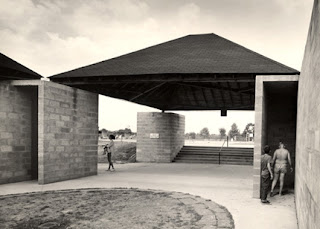Robert Venturi was the
architect who redefined the renowned phrase “less is more” into “less is a
bore”. I think it is a refreshing breakout from the era of modernist praise of
repetitive glass boxes. His theory of the duck and decorated shed is very
valid. The duck form does its function well, very straightforwardly tells you
that the construction involves ducks or more frankly sells ducks. Whereas, in
the case of the decorated shed, we cannot visualize its function from looking
at the building alone. The function of the building is defined by the activity inside but indistinguishable from the outside, so there’s a sign that directly states its function,
e.g. eatery. Venturi seemed to be declaring war against modernism; his works
all seemed to contradict the rules of modernism. This was clearly visible in
the Vanna Venturi House, a house he made for his mother, with elements such as
the arch and beam situated above the entrance, which structurally doesn’t
support any load but functions as a symbol that signifies an opening, or a
chimney that is not in the centre but shifted to the left, or a cut through the
gable arch and beam, or windows that are not on the same horizontal plane.
Venturi adores ambiguity and I agree with him that everything doesn’t have to
be functional structurally; an element can be “both” an ornament “and” be
functional, unlike modernist buildings that can only be “either/or”.
 |
| Big Donut Drive-in sign in a "decorated shed" - without the sign is it impossible to figure out that the building is a donut drive-through from the exterior |
 |
| Airspace, Tokyo - "decorated shed" |
In my opinion, his ideas do
resonate the idea of ‘erotic’ architecture, because the notion of contradiction
teases people with expectancies and luring them in with the attraction of
beautiful facades.





